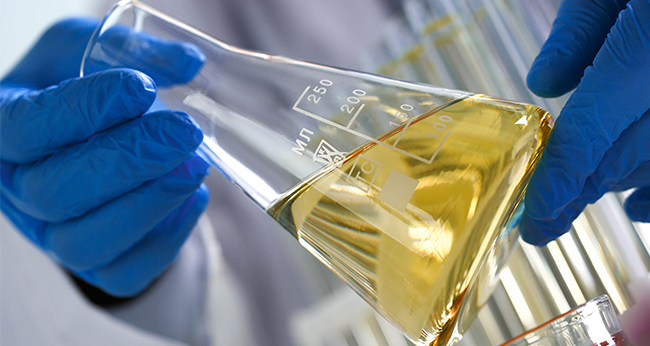What You Need to Know About Base Oil Viscosity
Viscosity, often related to the “thickness” of a fluid, encompasses more than this simple definition. Consider honey and water pouring from a container; honey flows slowly, appearing viscous, while water flows rapidly, appearing less so. This difference extends beyond thickness—it pertains to the intermolecular friction within the substance, defining its viscosity.

The description of a fluid as “viscous” or “inviscid” reflects its resistance to flow. Honey’s molecules adhere to one another, creating increased resistance, whereas water’s molecules traverse with ease, enabling fluidity. This difference in resistance provides an elementary understanding of viscosity, leading to a multifaceted concept.
Viscosity falls within the domain of rheology, the study of deformation and flow in materials. Rheologists categorize materials on a spectrum from purely elastic to purely viscous. Many common substances, such as peanut butter or shampoo, exist within the viscoelastic range, possessing characteristics of both.
Viscosity is dynamic, changing with temperature and pressure. For example, warmed syrup flows more easily due to reduced viscosity. Within pressure ranges from (0.1 to 200) MPa, viscosity may increase substantially, reflecting constraints on molecular movement within the fluid’s structure.
The Viscosity Index (VI) quantifies how a fluid’s viscosity changes with temperature. A higher VI indicates greater stability, whereas a lower VI denotes more significant changes, an understanding vital in fields such as lubrication.
Methods of Viscosity Measurement: Dynamic and Kinematic
In the field of rheology, where the study of deformation and flow in materials is paramount, dynamic viscosity plays an essential role. The term “viscosity” describes a particular material property that correlates the viscous stresses within a substance to the rate of change of deformation.
A straightforward way to conceptualize this phenomenon is through the example of planar Couette flow. In this model, a material is confined between two parallel plates. Should the top plate commence moving in a parallel motion at a constant velocity v, the constituent fluid particles flow in layers parallel to the plates. The flow velocity varies in a linear fashion from zero at the bottom plate to the velocity v at the top plate.
As the fluid layers move, they exert a frictional force upon one another. This force opposes the motion, representing the intrinsic viscosity of the fluid. In essence, the fluid resists the parallel motion of the top plate, necessitating an applied stress to maintain fluid flow.
The magnitude of the force F acting upon the top plate is directly proportional to both the speed v and the surface area A of each plate. Conversely, it is inversely proportional to the separation between the plates H. The proportionality factor in this relationship, denoted by μ, is referred to as the dynamic viscosity.
Through the analysis of dynamic viscosity, one can glean insights into the underlying mechanics of a fluid, therefor influencing various applications ranging from industrial manufacturing to the formulation of pharmaceuticals. The understanding and control of this property are indispensable in tailoring materials to specific functional requirements.
Kinematic viscosity, denoted by ν, addresses the ratio of dynamic viscosity μ to fluid density ρ, providing insight into the relative movement of fluid particles under different conditions.
Applications and Functional Considerations
Viscosity serves as an integral factor in various applications. The selection of viscosity, in conjunction with other factors like base oils and additives, influences the functionality of lubricants in scenarios such as gearboxes or heavy-load bearings.

